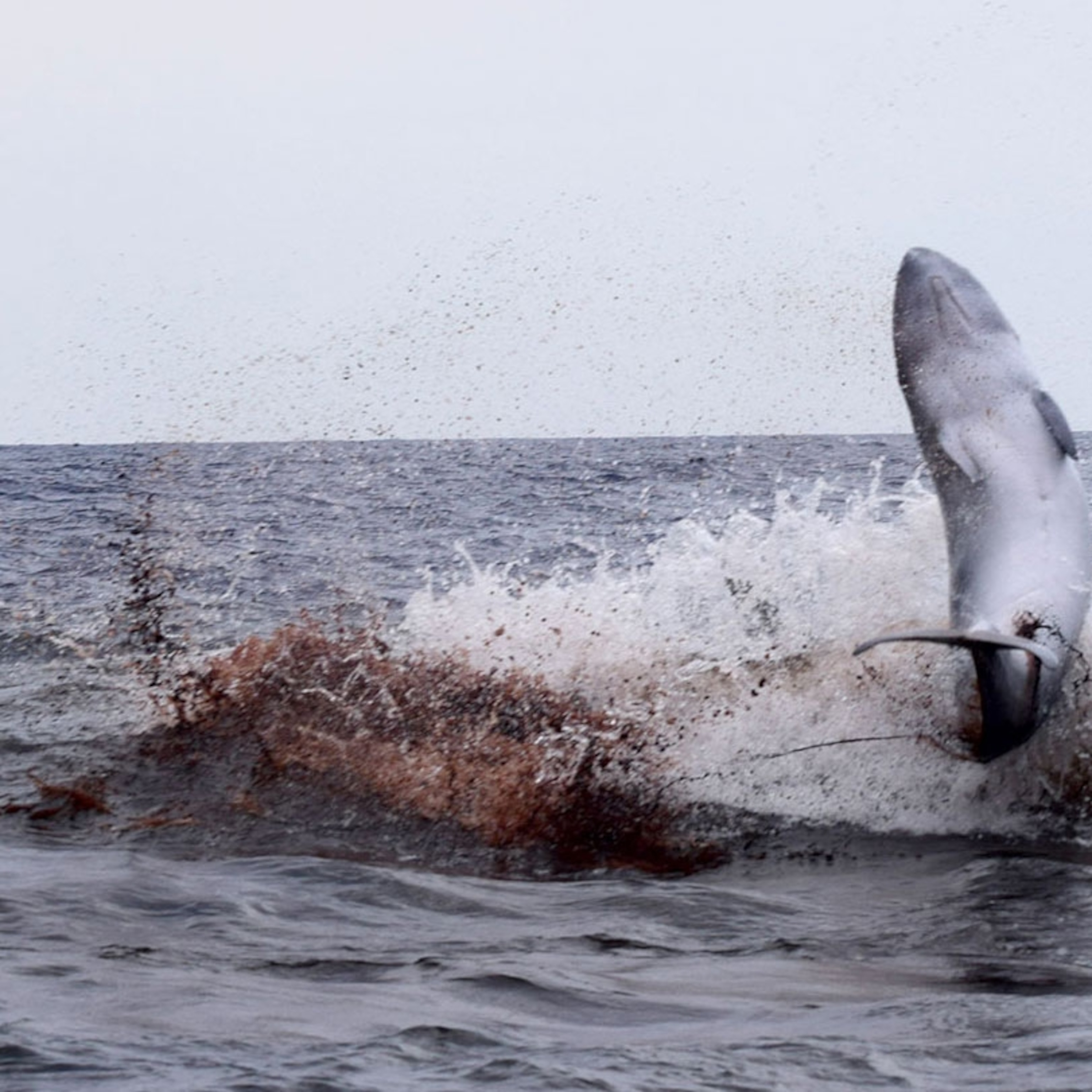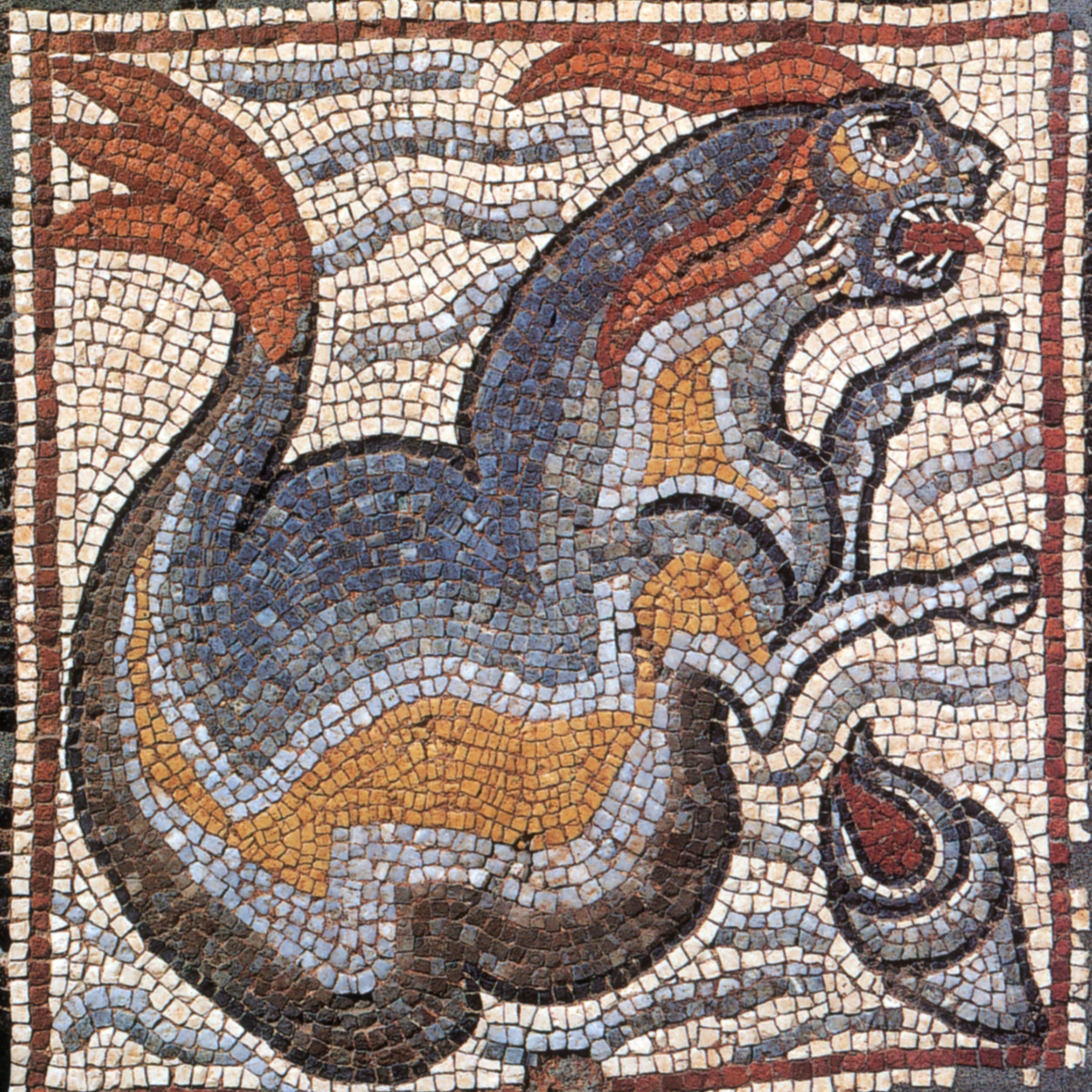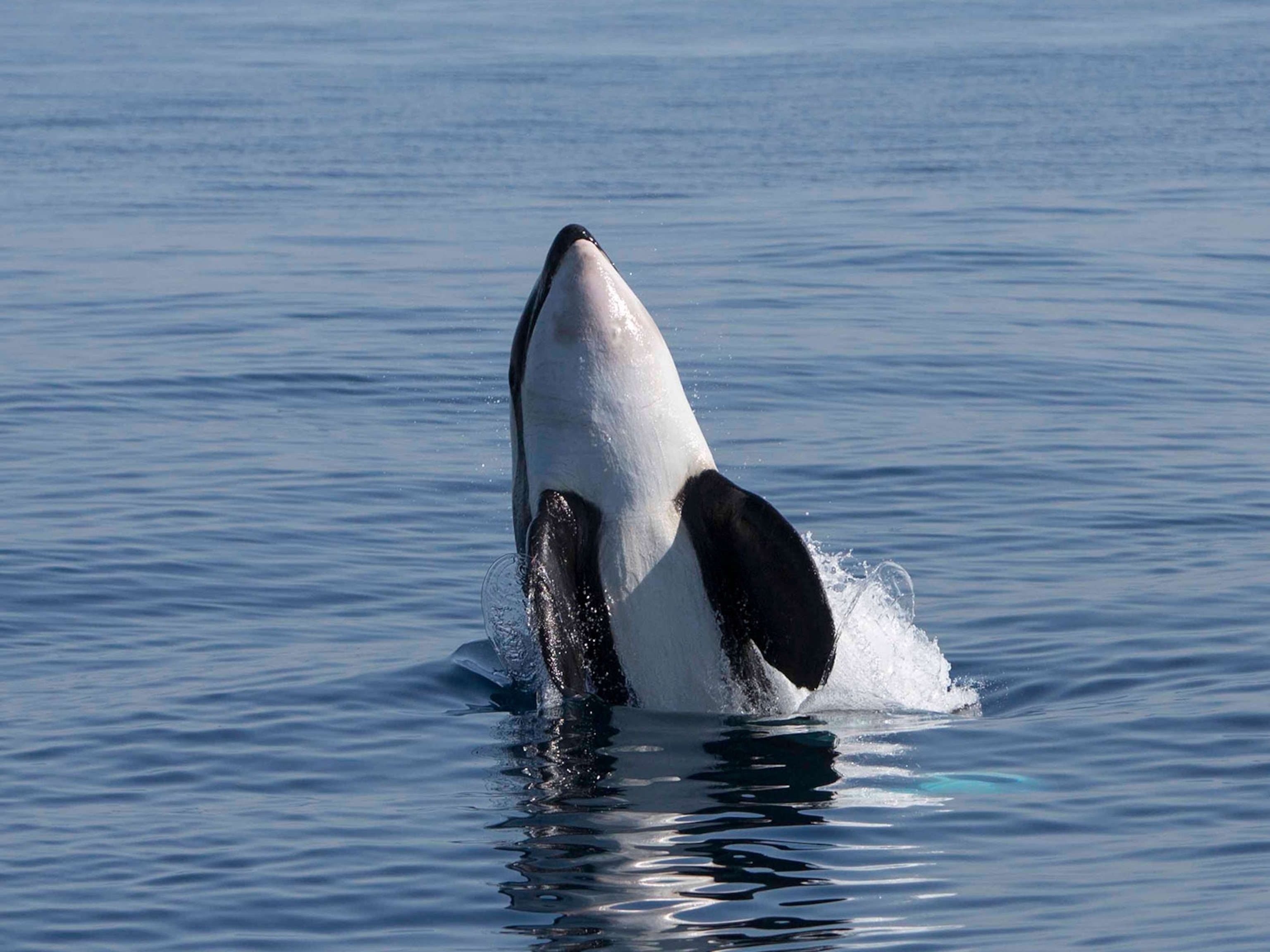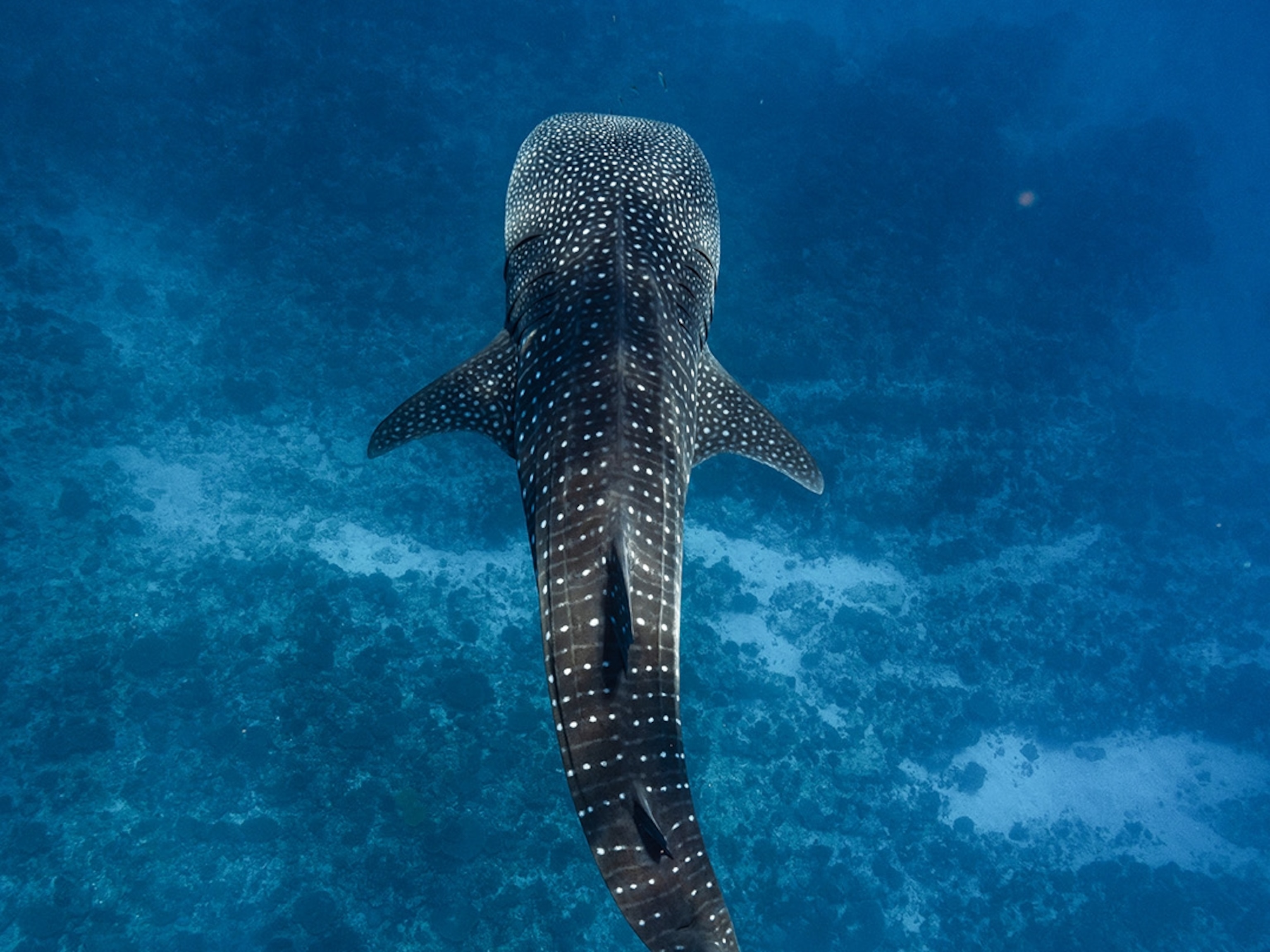
Tilikum, SeaWorld’s Killer Orca, is Dying
Three tragic human deaths made us finally confront the reality of keeping wild whales in captivity.
Tim Zimmermann has been writing about SeaWorld and marine mammal captivity since 2010, and he was an associate producer and co-writer of the documentary Blackfish.
I have been anticipating and dreading this announcement for years. This week, SeaWorld warned that Tilikum, SeaWorld’s largest and best-known killer whale, is dying. His health is deteriorating due to a drug-resistant bacterial lung infection. “He has a disease which is chronic and progressive,” an emotional SeaWorld vet explains in a video. “We have not found a cure.” The statement appears to be an effort to prepare the public for Tilikum’s death. “Historically, we never put out that kind of stuff unless we were pretty sure they are going to die,” says John Hargrove, who trained killer whales for 12 years at SeaWorld before leaving in 2012.
Tilikum is a special and transformative killer whale. He was netted off Iceland in 1983, at the age of two, and has lived in captivity for almost 33 years now, for the past 24 years at SeaWorld’s Orlando, Florida park. His life has changed how we view SeaWorld and the marine park industry, and changed our moral calculus regarding the confinement and display of intelligent, free-ranging species. (See "Can Captive Orcas Return to the Wild?")
Like most of the world, I had never heard of Tilikum until February, 24, 2010 when he pulled SeaWorld trainer Dawn Brancheau into his pool and brutally killed her. When I learned that he had been involved in two previous deaths it seemed clear he had a story worth telling. So I set out to try and explain how Tilikum’s life led to the death of Dawn Brancheau. I published “The Killer In The Pool” in Outside magazine in the summer of 2010. That led to a call from film-maker and director Gabriela Cowperthwaite, and a chance to help turn Tilikum’s story into the documentary Blackfish, which premiered in 2013. In between, journalist David Kirby published Death At SeaWorld, also an in-depth examination of killer whale captivity.
To tell Tilikum’s story, it was necessary to tell the story of SeaWorld and killer whale entertainment. He was responsible for three human deaths: a trainer at Sealand Of The Pacific in 1991, a late-night trespasser at SeaWorld in 1999, and Dawn Brancheau in 2010. The last death, because of its savagery and because Brancheau was a high-profile SeaWorld trainer, forced us to ask, collectively, sincerely, and for the first time: “Who Is Shamu?” Instead of the iconic, happy killer whale celebrated by SeaWorld and its fans for five decades, Tilikum demanded the world confront his reality, Shamu’s reality, which involved separation from family, confinement, boredom, chronic disease, aggression among marine park killer whales, and aggression against trainers.
“Tilikum's life was the subject of Blackfish, but when I began the film, I was terrified of him. I had nightmares about him,” says Cowperthwaite. “It was only when I learned about his capture, his life in captivity, that I began to understand the depth of this tragedy on so many levels.”
Tilikum made for a sympathetic and compelling character. At 22 feet and 12,000 pounds, he was a would-be ocean king reduced to a court jester with a floppy dorsal fin, splashing delirious SeaWorld audiences at the end of circus-style shows. (SeaWorld recently announced that it would phase out its Shamu shows.) His other, more important role, seemed equally unsettling: to be a prolific supplier of sperm for SeaWorld’s killer whale breeding program. John Jett, a SeaWorld trainer who helped care for Tilikum after his arrival at SeaWorld in 1992, found himself saddened by Tilikum’s existence: bullied by the female killer whales, too big to elude their attacks in a small pool, and always subject to the needs of the marine park business. “For somewhat selfish reasons I enjoyed working with Tilikum, and I have no doubt that his current trainers have sincerely tried to provide him a decent life,” says Jett, who left SeaWorld in 1995 and is now a research professor at Stetson University, near Orlando. “But Tilikum is a tragic figure, and I have often thought about the terror, confusion and stress that Tili has been forced to endure.”
Tilikum so touched our empathy that few in the public, and few on the staff at SeaWorld, could direct anger and blame at him for the death of Brancheau, a gloriously charismatic and well-liked trainer. It was as if everyone understood deep down that it was Tilikum’s circumstances, not Tilikum himself, that killed Brancheau. John Hargrove, who was a senior trainer at SeaWorld Texas when Brancheau died, says that most trainers, including some of Brancheau’s closest friends, did everything they could to care for Tilikum after the incident: “We did feel sorry for Tilikum, because we knew his life would be drastically changed forever. That he would become more isolated, with less contact and connection. We wanted him to be treated with dignity and respect on a daily basis, and not as a monster.” (See "Former Trainer Slams SeaWorld for Cruel Treatment of Orcas.")
It is without question a deep tragedy that it took the death of Dawn Brancheau for the world to stir itself to take a hard look at the lives of the killer whales she trained and loved. But Tilikum never set out to become the symbol of an industry, a relationship between man and nature, gone wrong. He was just a wild killer whale calf in an ocean world whose life was suddenly interrupted and derailed by the human world. And the thing that most saddens me about Tilikum’s plight, and his eventual death, is the life he never lived. I have been never able to see a wild killer whale without thinking of Tilikum, languishing mostly alone in his tank in Orlando. I frequently wonder whether he has any memory of the Icelandic seas, or his mother. I wonder what he would have looked like as a full-grown bull killer whale cruising the open ocean with a regal and knife-straight dorsal fin. I wonder how far he would have traveled, how deep he would have dived, and how magnificent he might have been as a totally wild killer whale.
But he was never given the chance, and we can mourn that. Still, when Tilikum dies he will leave us with something extremely precious, something to redeem his impoverished life in captivity: a desire to give greater moral consideration to other species on our planet, and to re-think the casual ease with which we seek to use nature and all things wild for human purposes. We desperately needed that. For me, that will be Tilikum’s truest and most meaningful legacy.
Read more about orca culture in the wild.
Tim Zimmermann has been writing about SeaWorld and marine mammal captivity since 2010, and he was an associate producer and co-writer of the documentary Blackfish. Follow him on Twitter.







